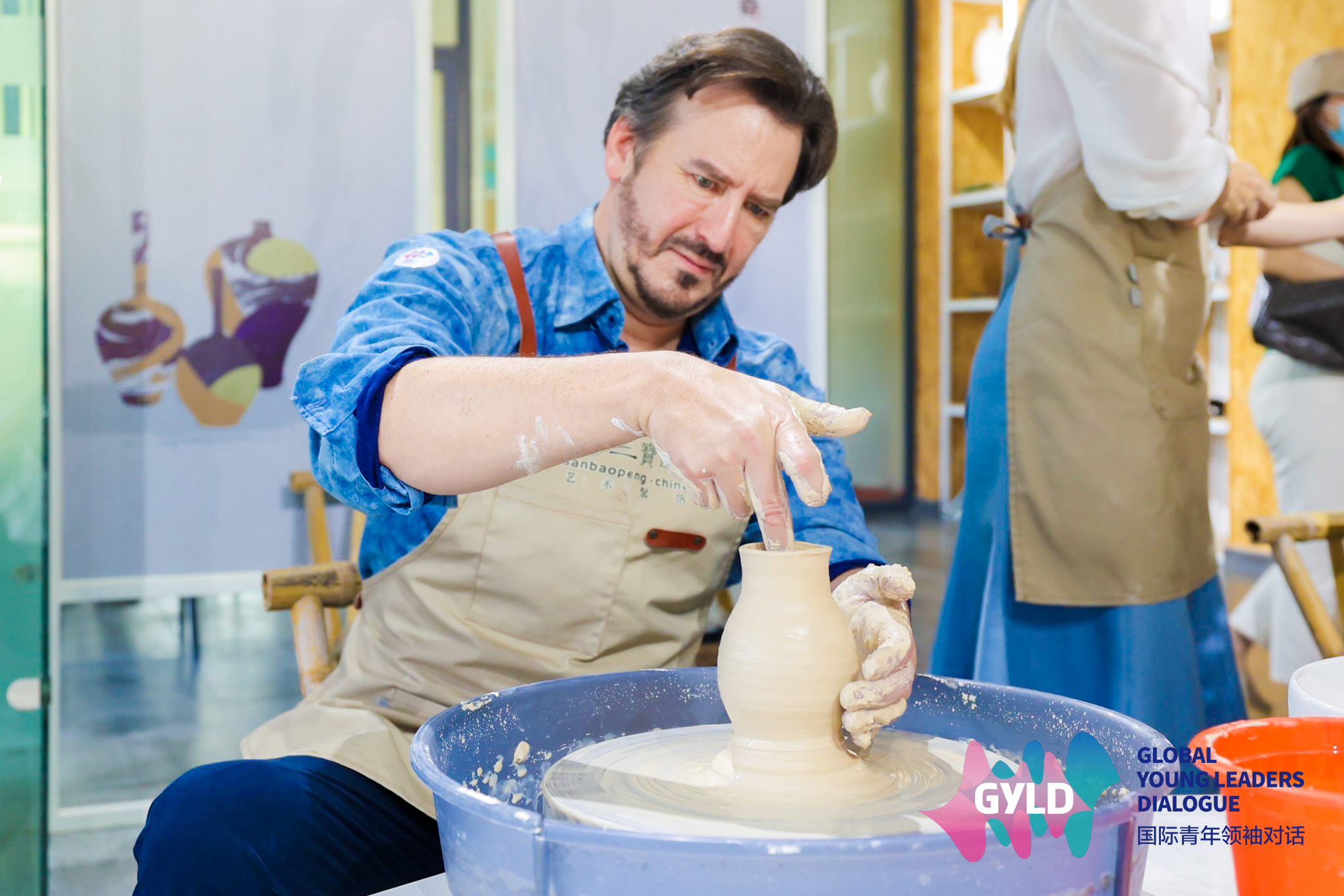International youth experience traditional culture in E China

[ad_1]
Large bamboo baskets filled with local produce, such as chilies, pumpkins and chrysanthemum flowers, are placed in front of the houses in Wuyuan, Jiangxin Province, China. /GYLD
Large bamboo baskets filled with local produce, such as chilies, pumpkins and chrysanthemum flowers, are placed in front of the houses in Wuyuan, Jiangxin Province, China. /GYLD
Young representatives from the Global Young Leaders Dialogue (GYLD) visited east China’s Jiangxi Province last week and experienced the unique charm of Chinese culture and witnessed the outcomes of the country’s poverty alleviation and rural revitalization efforts.
Representatives from eight countries visited Jingdezhen, known as the “Porcelain Capital,” and Wuyuan, a popular tourist destination in Shangrao City.
Jingdezhen attracts more than 30,000 people annually, including over 5,000 foreigners.
“The city is like an old tree rooted in the soil of heavy ceramic culture, emitting new shoots,” Steven Weathers, who has lived in China for about 17 years, said after the tour. While big Chinese cities continue to develop, a number of small- and medium-sized cities, such as Jingdezhen, are seizing development opportunities centered on traditional culture to become more open and diversified, he said.

Steven Weathers tries porcelain making in Jingdezhen. /GYLD
Steven Weathers tries porcelain making in Jingdezhen. /GYLD
Traditional culture not only endows the city with its rich heritage, but also brings vitality to the countryside.
In September, Wuyuan welcomes its annual “sun drying” season when large bamboo baskets filled with crops, such as chilies, pumpkins and chrysanthemum flowers, are placed outside the houses. This process is called shaiqiu, or “autumn parching,” in Chinese – a tradition that has been passed down for centuries.

To welcome the international youth, the villagers made a picture with bright yellow corn and fiery red peppers, reading “Talk to the world and share the future.” /GYLD
To welcome the international youth, the villagers made a picture with bright yellow corn and fiery red peppers, reading “Talk to the world and share the future.” /GYLD
To welcome the international youth, the villagers made a picture with bright yellow corn and fiery red peppers. “Talk to the world and share the future,” it read.
In recent years, the villagers have moved down the mountains, bringing the original brick, wood and stone carvings back to life. The “crumbling” mountain village of the past has now become a famous scenic spot.
“In inheriting traditional culture, China has found a way to develop tourism, and it provides a model for the world’s poverty reduction cause,” said Ishimwe Irene Fidele, a Rwandese student studying in Nanchang, the capital of Jiangxi Province.
The young participants said that GYLD China Tour is a window to understand China and a bridge to enhance mutual understanding. They said they are willing to become ambassadors of cultural exchange and join their strengths to spread Chinese culture, enhance mutual trust and cooperation among countries, and build a community with a shared future for mankind.
[ad_2]
Source link





